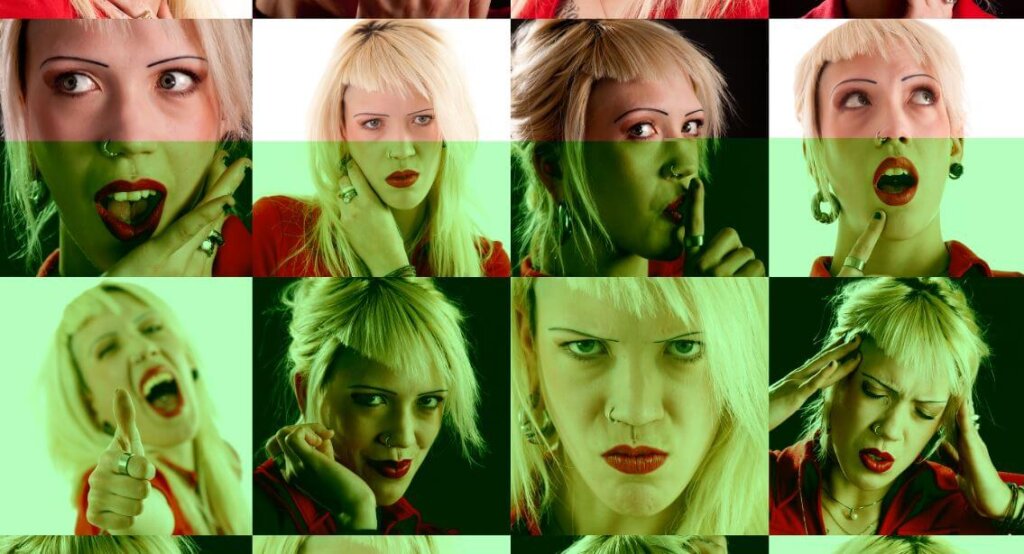What is nonverbal behavior? Simply stated, it is “the act of giving or exchanging information without using any spoken words.”1 A more comprehensive definition would include such non-linguistic aspects of communication as gestures, eye contact, touch, signs and symbols, body language, facial expressions, postures, proximity, color, appearance, habits and handwriting style (Nomaan, n.d.).
According to the College Journal, “Body language comprises 55% of the force of any response, whereas the verbal content only provides 7%, and paralanguage, or the intonation — pauses and sighs given when answering — represents 38% of the emphasis.”3 Those are compelling data that every attorney should use to his or her advantage.
During our interpersonal exchanges, we silently communicate volumes about ourselves, so it’s essential to be mindful of nonverbal cues – especially with clients and in the courtroom.
Specifically, consider the importance of:
1.) Visual Image. As an attorney, you represent a prestigious profession that demands a professional appearance at all times. Unkempt hair or nails, scuffed shoes, wrinkled or ill-fitting clothing, stains or other visual issues communicate a lack of attention to detail – something no attorney wants associated with his or her personal brand. Be cognizant of the fact that your key audiences make swift judgments about your intelligence, credibility, income, education, social status, trustworthiness and likeability within the first few minutes of meeting you. These judgments are often based on nothing more than your appearance and nonverbal mannerisms. Consequently, you can imagine the impact of your visual image when meeting prospective clients or making your opening arguments in court. You must first determine how you want to be perceived and then dress and behave accordingly to achieve your desired results (one component of the broader practice of perceptual management).
2) Color Psychology. Employ the psychology of color as an intelligent strategy in your nonverbal repertoire. By incorporating into your wardrobe flattering hues of greens and blues, you’ll be stimulating positive brain receptors in your audiences. For example, green conveys “go”; it is also the color of money, a powerful semiotic sign. Blue is not only the most universally liked color, but navy blue conveys trust and respectability. There is, however, a common misconception about the color red. While it has been deemed, and rightly so, the “power” color, red communicates stop!; it is also a stimulating and sometimes sensual color that should be used sparingly in the legal profession. Further, red can be intimidating, which is not always a desired response. Most important, red draws the eye away from the face, the hub of both verbal and nonverbal communication. There are volumes to be shared on this topic, but a very good primer is the book, “Color – Messages & Meanings: a Pantone Color Resource,” by Leatrice Eiseman.
3) Body language. Many people are unaware of their mannerisms, posture and expressions. When interacting with your key audiences, use movement, gestures and facial cues to punctuate your words. Practice the art of active listening, “a way of listening and responding to another person that improves mutual understanding.”
4) Nonverbal signals employed during active listening include maintaining eye contact, smiling, nodding and leaning forward to convey interest and enthusiasm. Crossing your arms, turning away from someone or even sighing can convey disinterest, objection – even enmity. Fidgeting, hair tossing, foot tapping and other tics convey anxiousness and boredom. An unconscious frown may be a natural physical response to your thoughtful cognitive processing, but can communicate negative nonverbal messages. Be mindful, too, of proxemics – the study of human spatial relations and an important aspect of nonverbal behavior. In the American culture, we tend to demand and protect our “personal space”; in business, it is even more critical to respect these boundaries. In the work environment, the norm of social space – a distance of 4 to10 feet between you and the other party – should be followed.
5.)Violating this rule of proxemics can make others feel uncomfortable, intimidated and dubious of your intentions. In the practice of law, active listening and proxemics are absolutely essential and should be utilized in every professional situation.
6) Scents and Sensibilities. According to the U.K.’s Social Science Research Centre, “smells can evoke strong emotional reactions. In surveys on reactions to odours, responses show that many of our olfactory likes and dislikes are based purely on emotional associations.” 6 This is because scents and fragrances stimulate the brain’s limbic system, affecting mood and emotion. While some scents can have positive effects, others can have the opposite, which is why you should avoid wearing fragrances, particularly in court. Not only are fragrances distracting, many people are sensitive to them (consider the noses of your clients, coworkers, judges and juries). In addition, the smells of cigarettes, body odors and foods can convey powerful (and often undesired) nonverbal messages. Scents deemed unpleasant can significantly affect perceptions.
The Social Issues Research Centre reports that, “in one study, the presence of an unpleasant odour led subjects [to] give lower ratings to photographed individuals” and in another survey, “[some] scents usually perceived as pleasant (such as flowers) were violently disliked by certain respondents. These preferences were explained by [experiences] associated with particular scents.” This is clearly an important consideration when in front of a jury.
While the fields of communication and interpersonal relations are both extensive and complex, mastering basic skills and protocols will (a) enhance your image and personal brand, (b) prevent unintended gaffes and (c) ensure positive, productive interaction with your clients, colleagues and courtroom associates.









